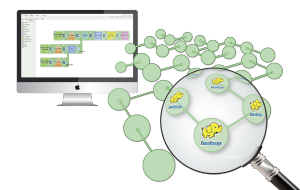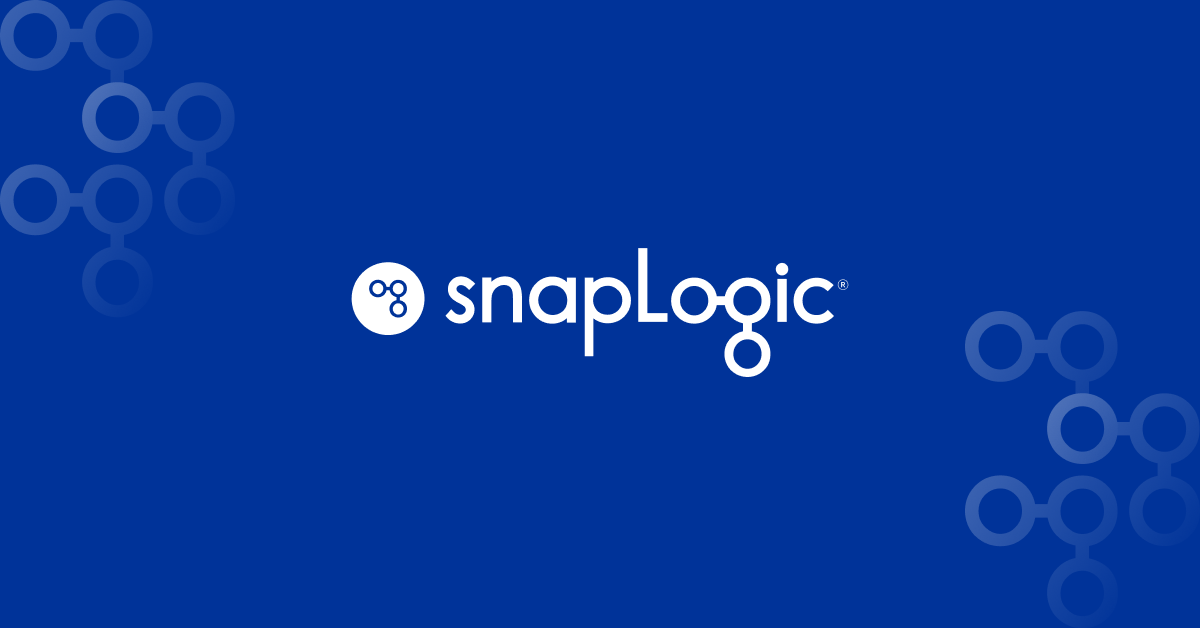“The problem is, big data does not play well with traditional tools or analytic theories. Traditional tools choke on the volume, velocity and variety of data. To get the most from big data, companies should invest in new technologies, real-time automation, visualization and machine learning.”
– Evan Hovorka, Group Manager, Digital Marketing at a Fortune 500 Retailer
SnapLogic: Can you describe your current role?
 EH: My team provides solutions that drive digital marketing ROI and great customer experiences. Some recent examples would be a cross channel analytic solution, several big data projects and web service automation for substantial marketing channels. It’s a unique role which evolved over the years as the lines between marketing and IT faded. The business relies on key partners to drive traffic and sales to our sites. Not surprising, these Internet-first companies demand fast and flexible solutions. An example is item, price and promo data. This data needs to be distributed to dozens of partners with many custom business rules in play. Using marketing automation tools we empower partners like Google, shop comparison sites, social sites and affiliates to iterate and innovate quickly on our behalf. Speed equals relevancy in digital marketing, so a foundation built on flexibility is required.
EH: My team provides solutions that drive digital marketing ROI and great customer experiences. Some recent examples would be a cross channel analytic solution, several big data projects and web service automation for substantial marketing channels. It’s a unique role which evolved over the years as the lines between marketing and IT faded. The business relies on key partners to drive traffic and sales to our sites. Not surprising, these Internet-first companies demand fast and flexible solutions. An example is item, price and promo data. This data needs to be distributed to dozens of partners with many custom business rules in play. Using marketing automation tools we empower partners like Google, shop comparison sites, social sites and affiliates to iterate and innovate quickly on our behalf. Speed equals relevancy in digital marketing, so a foundation built on flexibility is required.
Deploying advanced technology for ad reporting, attribution and media performance is also part of the role. Pulling in metrics from ad servers, paid search programs, email, social and video into a Hadoop cluster that marries with more traditional databases allows us to see performance across channels. This secure network of data pipes allows us to make smart decisions quickly and safely.
SnapLogic: Marketing has become so technology-based in the past few years. This has brought about innovation but where are the challenges or downsides?
EH: After obtaining a degree in Computer Information Systems I worked as a programmer in the smart card engineering field. It was interesting work, but even more fascinating was all the opportunity for improvement in marketing systems. This is a space that rewards responsiveness over flawless design. Being able to build and automate quickly is required but not something traditional IT shops were set up to deal with then. Another challenge is that marketers historically have not held computer science degrees and lack the skills needed to take advantage of new tech. Connecting and distributing data and applications has become a core strategy for a progressive marketing shop. This is all possible with deeper IT partnerships, smarter marketers and tools that simplify technology so more people can find success. The challenge is finding the right skills to staff both IT and marketing.
SnapLogic: If you’re in front of a room of marketers and use the words Big Data – do eyes glaze?
EH: Not anymore. Progressive minds are really excited about the opportunity. In theory, big data tools connect disparate sales channels, offline and online activity, data from IoT sensors and provide views into real-time inventory, allowing leaders to adjust plans accordingly. Hadoop and its tool are maturing and increasingly easier to use, so the skills threshold is dropping. People should be extremely excited about co-locating their valuable data assets into a data lake/Hadoop cluster, which is the definition of democratized data. Big data at big companies introduces some concerns, though. I can’t stress enough the importance of security, data lineage and the education of users.
SnapLogic: Is big data improving the bottom line at large companies yet?
EH: Expense reduction makes Hadoop an easy sell but I’m not sure how many established companies have actually shut off their old, expensive databases once Hadoop showed up. That is acceptable in my books, because the true value is not in shutting off older systems or porting ETL load but rather from the previously impossible ideas and innovations that evolve fro these new systems. Companies need to hire data scientists, which can be expensive. So even though Hadoop is affordable, one still needs those specialists to make it really shine.
While that transition happens, companies can enable their senior analysts to discover and build in the big data lake, using tools that mitigate some of the mystery and risk. SnapLogic is one such tool, allowing regular business teams to tap into data, connect disparate sources and get to insights without hiring an army of data scientists and ETL experts. One tool alone may not produce the next Netflix recommendation engine, but most companies have much walking to do before they run in Hadoop.
SnapLogic: Marketing analytics is a hot space, but what are some of the technological gaps that remain?
 EH: Big data is here to stay; we can collect and expose high volumes of low-level information that has not traditionally been mined or co-located. An analyst would typically look at store sales, demographic data and regional data. Big data tools could add to that with many more sources of important information, such as log files from IoT, weather patterns, vast amounts of historic data, time series data and much more. The problem is, big data does not play well with traditional tools or analytic theories. Traditional tools choke on the volume, velocity and variety of data. To get the most from big data, companies should invest in new technologies, real-time automation, visualization and machine learning.
EH: Big data is here to stay; we can collect and expose high volumes of low-level information that has not traditionally been mined or co-located. An analyst would typically look at store sales, demographic data and regional data. Big data tools could add to that with many more sources of important information, such as log files from IoT, weather patterns, vast amounts of historic data, time series data and much more. The problem is, big data does not play well with traditional tools or analytic theories. Traditional tools choke on the volume, velocity and variety of data. To get the most from big data, companies should invest in new technologies, real-time automation, visualization and machine learning.
Another challenge can be the various sources of truth. Reconciling silos is not easy, but it is doable. Ideally an analyst could quickly and reliably move and transform data from place A to place B, analyze its value and take actions to improve commonly-agreed-upon KPIs. This often means moving data from place B to a plethora of partners and downstream systems each with their own format, cadence and security, which is something that traditional ETL tools struggle to accomplish.
SnapLogic: So how can people get started with big data and the tools needed to use it?
EH: Mining value from these new data solutions is an opportunity for smart people to shine. Big data is not about incrementally improving ETL jobs or pushing data to faster, cheaper systems. That’s a conservative view. Big data is about big ideas. Ideally, people will put a moon-shot lens over their data assets and invent game changing opportunities. Ideas that may not even align to current corporate initiatives should be one of the goals. Moving from incremental improvements into a whole new business model is what excites me about the big data/computer science space. Humans harnessing new machines in an effort to build something amazing! Who wouldn’t want to work under that imperative?
Evan Hovorka is a Group Manager in digital marketing and is passionate about using new technology to drive business goals and empower people to do great things. He leads prototype, automation and big data proof of concepts (POCs) for a large US retailer. His career includes 15 years of strategy leadership in the CRM, digital media and data-driven marketing fields.




